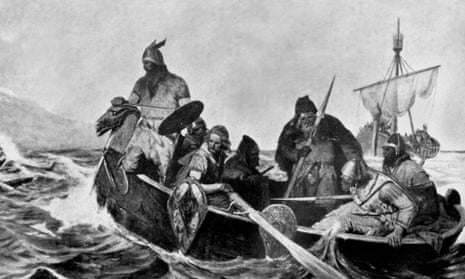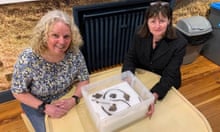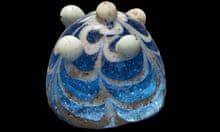Half a millennium before Christopher Columbus crossed the Atlantic, the Vikings reached the “New World”, as the remains of timber buildings at L’Anse aux Meadows on the northern tip of Canada’s Newfoundland testify.
The Icelandic sagas – oral histories written down hundreds of years later – tell of a leader named Leif Erikson and a settlement called “Vinland”, assumed to be coastal North America. But while it is known that the Norse landed in Canada, exactly when they set up camp to become the first Europeans to cross the Atlantic, marking the moment when the globe was first known to have been encircled by humans, has remained imprecise.
Now scientists using a new type of dating technique and taking a long-ago solar storm as their reference point have established that the settlement was occupied in AD1021 – all by examining tree rings.
Three juniper and fir logs that were cut from the Newfoundland settlement date it to exactly a millennium ago, 471 years before Columbus’s first voyage.
It has been thought that the settlement, L’Anse aux Meadows, was thriving somewhere between 990 and 1050. This was based on stylistic analysis of architectural remains and a handful of artefacts examined after the settlement was discovered 60 years ago. The dates also tally with interpretations of the Icelandic sagas, which were written down in the 1200s
This study, published in the journal Nature, made use of the cosmic-ray induced upsurge in atmospheric radiocarbon concentrations during a known solar storm in AD993, which released an enormous pulse of radiation that was absorbed by trees at the time.
The logs, with bark still attached, were from trees alive during that solar storm, and excavated from the site. Such solar storms are reflected in annual tree growth rings. In all three samples, 28 growth rings were formed after the one that bore evidence of the storm, meaning the trees were cut in AD1021.
Ordinary radiocarbon dating – determining the age of organic materials by measuring their content of a particular radioactive isotope of carbon – proved too imprecise to date L’Anse aux Meadows when the site was discovered in 1960, although there was a general belief it was from the 11th century.
Proof that the trees were cut by Vikings was there, too. “They had all been modified by metal tools, evident from their characteristically clean, low-angle cuts. Such implements were not manufactured by the Indigenous inhabitants of the area at the time,” the study by scientists at the University of Groningen in the Netherlands said.
“We provide evidence that the Norse were active on the North American continent in the year AD1021. This date offers a secure juncture for late Viking chronology. More importantly, it acts as a new point of reference for European cognisance of the Americas, and the earliest known year by which human migration had encircled the planet.”
The Vikings possessed extraordinary boat-building and navigation skills, establishing settlements on Iceland and Greenland. “Much kudos should go to these northern Europeans for being the first human society to traverse the Atlantic,” Michael Dee, a geoscientist and co-leader of the study, told Reuters.
The date corroborates two Icelandic sagas – the Saga of the Greenlanders and the Saga of Erik the Red – that recorded attempts to establish a settlement in Vinland by a leader named Leif Erikson.
Also known as Leif the Lucky, he was the son of Erik the Red, who was the founder of the first Norse settlements in Greenland. According to the Saga of the Icelanders, Leif established a Norse settlement at Vinland, which is usually interpreted as being coastal North America, though speculation remains over whether this is the L’Anse aux Meadows settlement.
“I think it is fair to describe the trip as both a voyage of discovery and a search for new sources of raw materials,” Dee said. “Many archaeologists believe the principal motivation for them seeking out these new territories was to uncover new sources of timber, in particular. It is generally believed they left from Greenland, where wood suitable for construction is extremely rare.”
The 1021 date roughly corresponds to the saga accounts, Dee said, adding: “Thus it begs the question, how much of the rest of the saga adventures are true?”








